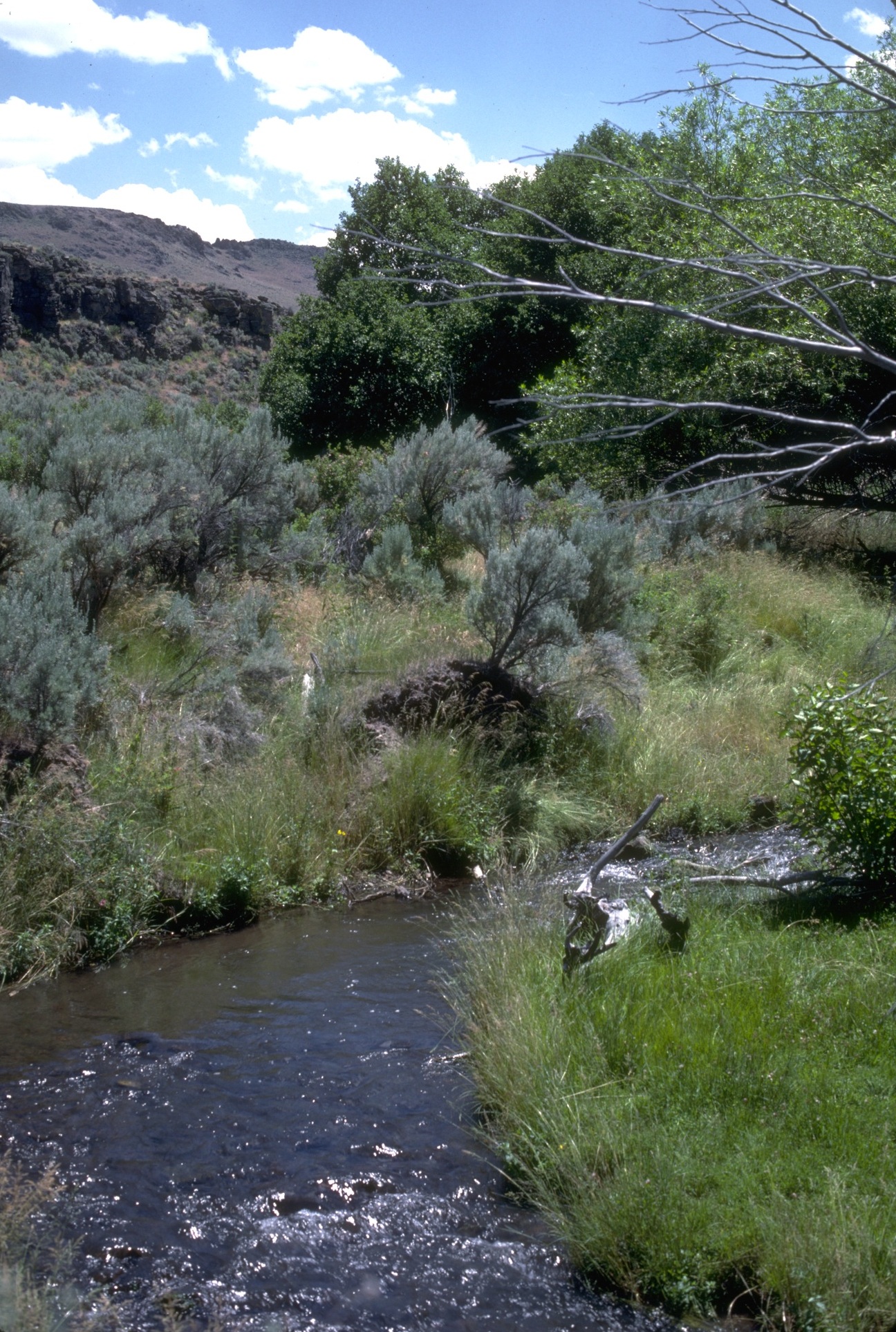(Information via Wikipedia)
A riparian zone or riparian area is the interface between land and a river or stream. Riparian is also the proper nomenclature for one of the

Riparian zone along Trout Creek in the Trout Creek Mountains, part of the Burns Bureau of Land Management District in southeastern Oregon
In some regions the terms riparian woodland, riparian forest, riparian buffer zone, and riparian strip are used to characterize a riparian zone. The word riparian is derived from Latin ripa, meaning river bank.
Riparian zones may be natural or engineered for soil stabilization or restoration. These zones are important natural biofilters, protecting aquatic environments from excessive sedimentation, polluted surface runoff and erosion. They supply shelter and food for many aquatic animals and shade that limits stream temperature change.
When riparian zones are damaged by construction, agriculture or silviculture, biological restoration can take place, usually by human intervention in erosion control and revegetation. If the area adjacent to a watercourse has standing water or saturated soil for as long as a season, it is normally termed a wetland because of its hydric soil characteristics. Because of their prominent role in supporting a diversity of species, riparian zones are often the subject of national protection in a Biodiversity Action Plan.
Carson River Project | The Nature Conservancy
The Carson River watershed supports:
Nearly 250 bird species including goshawks, bald eagles, sandhill cranes, white-faced ibis and tri-colored blackbirds
Many wildlife species including western pond turtles, leopard frogs, monarch butterflies, pine martin, mule deer, black bear and mountain lion.
As you can see in the photo on the left the rich lush vegetation exits only along the river floodplain. This is normal for most of the Western USA riparian zones as much of the west is desert or near desert. Look at the photo in full size and examine the hills in the background!